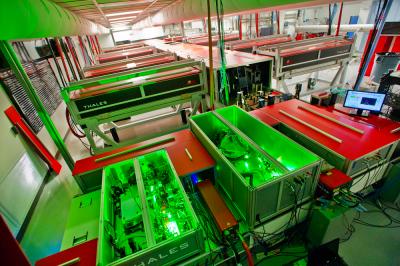Berkeley Lab Laser Accelerator (BELLA) laser system has generated a PW of 40 fs long power at a pulse rate of 1Hz, delivering one pulse each second. This unique generation was achieved on the night of July 20, 2012, marking the accomplishment at the U.S. Department of Energy's Lawrence Berkeley National Laboratory (Berkeley Lab). This is the first laser system to make this kind of unique achievement.
 This shows the BELLA laser under construction
This shows the BELLA laser under construction
This BELLA design is based on extensive laser plasma accelerator research performed by LOASIS. In contrast to conventional accelerators, the laser plasma accelerators produce electron density waves, passing via plasma. Based on laser beams, the waves can move through plasma housed within a thin capillary in a sapphire (crystalline block), or can either heat and via a plume of gas. A few of the plasma's free electrons are trapped by these waves, which will then be activated to extreme energies within short lengths.
The first high-quality electron beams of 100 MeV was reported by LOASIS in 2004, followed by first beams of 1 GeV in a 3.3 cm long sapphire block in 2006.
The BELLA laser will power the first laser plasma accelerator to generate a beam of electrons of 10 GeV high energy. Unlike other traditional ones, the BELLA accelerator measures 1m in length, backed by its laser system placed in an adjoining room.
The BELLA laser system has previously shown up to 42.4 J of compressed output energy in 40 fs at 1 Hz. Its 1PW of initial peak power is 2x than that of lasers capable of generating more intense pulses than that utilized by the entire U.S. "at any instant in time." The BELLA laser's average power is just 42.4 W, the optimal power for a typical household light bulb. By packing the modest average power within a very short pulse, this high peak power can be achieved.
BELLA laser system is completely integrated within personnel protection systems and Berkeley Lab equipment. Experiments for demonstrating BELLA's potential to achieve 10-GeV beams will start during this fall.